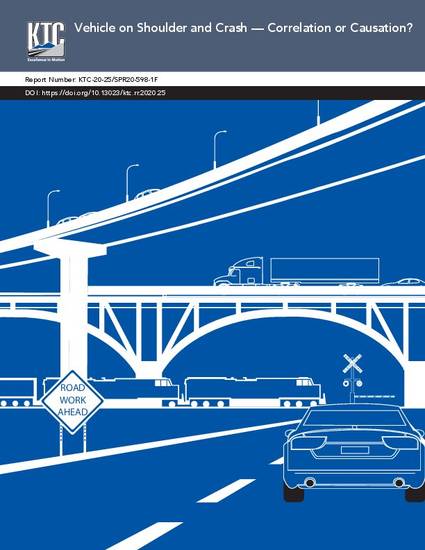
This study sought to evaluate the relationships between vehicles on shoulder, congestion, and crashes. Three pertinent datasets on interstates were obtained and then integrated using a spatiotemporal approach. The analysis showed that about 36% of the crashes had vehicle on shoulder present in their vicinity, defined as 0.25 miles upstream and downstream of a crash site and 30 minutes before crash occurrence. The percentage increased considerably as spatial/temporal window expanded. In addition, congestion was found to be associated with about 25% of the crashes. The presence of both vehicle on shoulder and congestion was found for 11.7% of the crashes, signifying a high correlation between them and crashes. Based on crash narrative review, 1.8% of all crashes directly involved vehicles on shoulder and 23% of the carshes cited congestion as a contributor. However, there’s little indication in the crash narratives on how vehicles on shoulder contributed to crashes, beyond their direct involvement, or how they contributed to congestion which may led to crashes. Only 6 out of the 512 crashes flagged for review through the keyword search process specified a vehicle on shoulder as a contributor to congestion and subsequent crashes. While a small fraction of crashes were attributed to vehicles on shoulder, these crashes tended to be more severe than average interstate crashes.
Available at: http://works.bepress.com/ben_blandford/32/

© 2020 University of Kentucky, Kentucky Transportation Center
Information may not be used, reproduced, or republished without KTC’s written consent.
The contents of this report reflect the views of the authors, who are responsible for the facts and accuracy of the data presented herein. The contents do not necessarily reflect the official views or policies of the University of Kentucky, the Kentucky Transportation Center, the Kentucky Transportation Cabinet, the United States Department of Transportation, or the Federal Highway Administration. This report does not constitute a standard, specification, or regulation. The inclusion of manufacturer names or trade names is for identification purposes and should not be considered an endorsement.